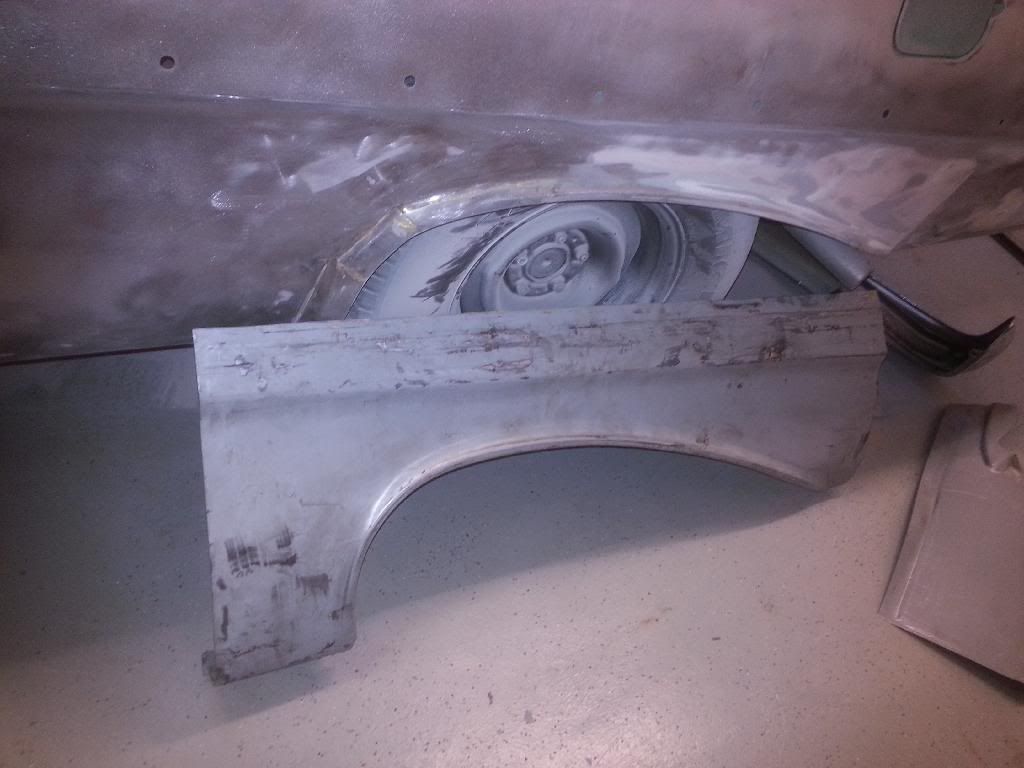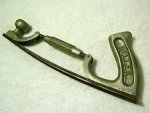56_Kruiser
New member
I have decided to put in a patch panel on my '61 Chevy Bubbletop rear quarters. The old patch there now was showing some failure. Below is the area, and the panel:

Been many years since I've done a patch panel (I'm not a professional body man). I'm thinking I'd like to butt weld it, using clamps similar to this.
My concern is in how to get the cut exact enough on the car to match the panel to. I plan to not use the entire panel. I plan to cut below the body line change (not sure how to best describe it...but you'll notice that the repair panel has is tall enough to be a couple inches above that line that runs from front to back down the side of the car. The curve on the patch panel is not very accurate .)
I'm thinking about cutting the patch panel to the size I want. Then lay it on the car and mark...but then cut it below the marking. that is, the patch panel would still overlay some metal on the car. Then get the patch panel clamped on the car, and use something to more precisely mark the outline of the patch panel, and then cut it out again, with expectations of fit.
Any thoughts and recommendations on anything about the process is apprecaited.
BTW...I have an old wire welder, with .030 wire, that I plan to weld it up with. Not sure I need to purchase a new welder, but open to comments and suggestions.
Thanks.

Been many years since I've done a patch panel (I'm not a professional body man). I'm thinking I'd like to butt weld it, using clamps similar to this.
My concern is in how to get the cut exact enough on the car to match the panel to. I plan to not use the entire panel. I plan to cut below the body line change (not sure how to best describe it...but you'll notice that the repair panel has is tall enough to be a couple inches above that line that runs from front to back down the side of the car. The curve on the patch panel is not very accurate .)
I'm thinking about cutting the patch panel to the size I want. Then lay it on the car and mark...but then cut it below the marking. that is, the patch panel would still overlay some metal on the car. Then get the patch panel clamped on the car, and use something to more precisely mark the outline of the patch panel, and then cut it out again, with expectations of fit.
Any thoughts and recommendations on anything about the process is apprecaited.
BTW...I have an old wire welder, with .030 wire, that I plan to weld it up with. Not sure I need to purchase a new welder, but open to comments and suggestions.
Thanks.
Last edited:


